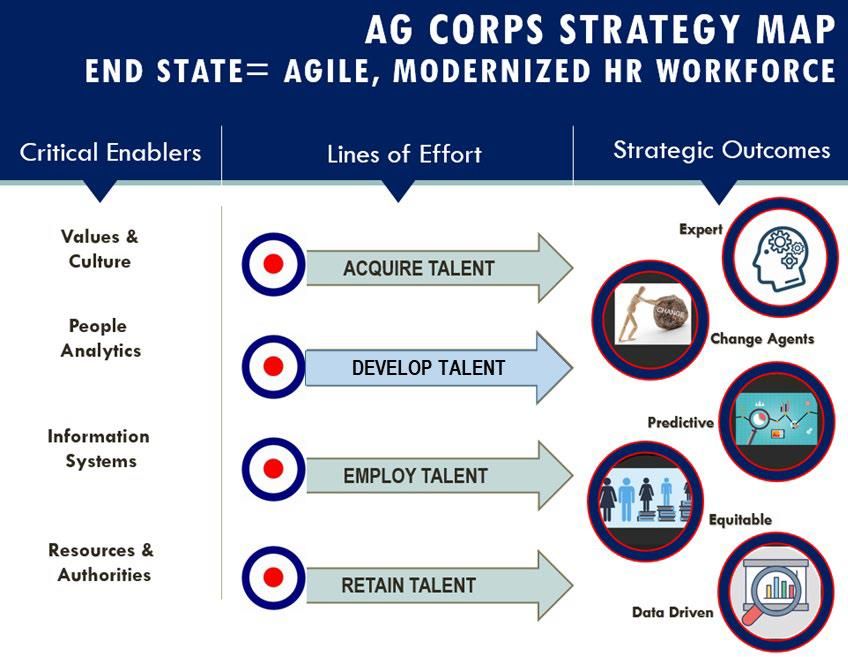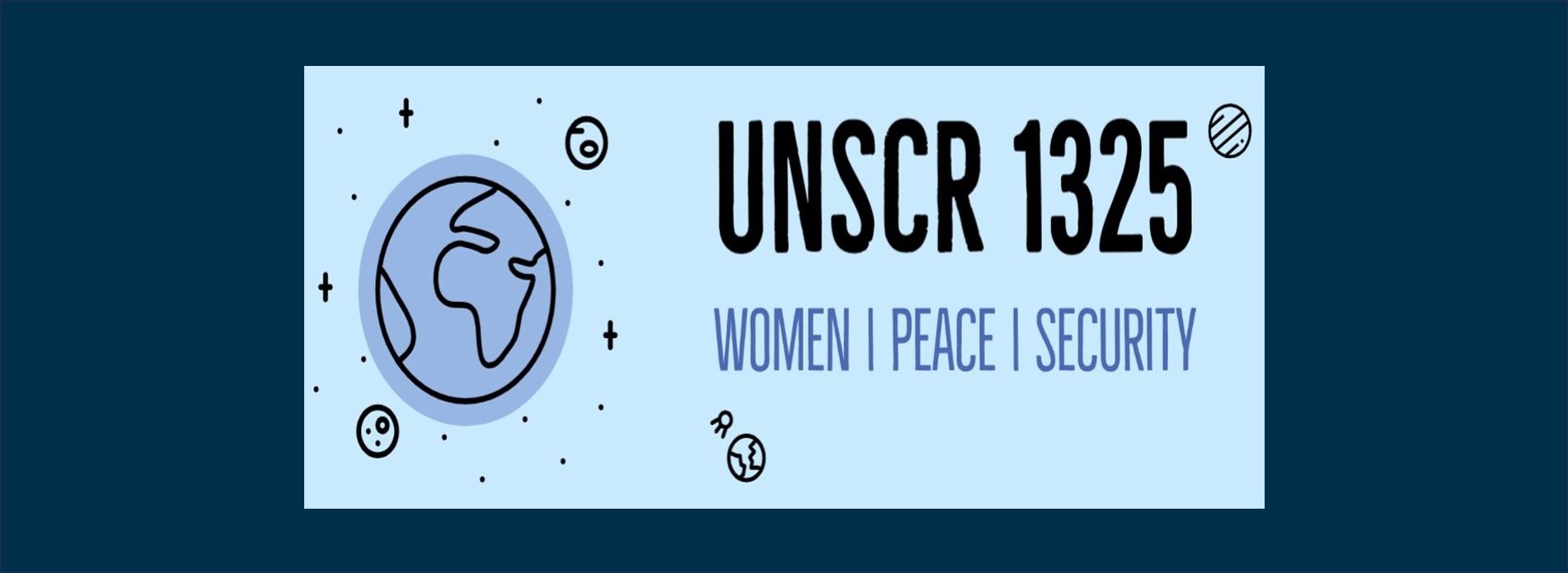By MAJ Lauren Ward
The United Nations Security Council formally adopted United Nations Security Council Resolution 1325 Women, Peace, and Security (WPS) in 2000. This resolution codified the requirement to consider the diverse needs of women, girls, men, and boys in armed conflict. Following this resolution, the U.S. established numerous formal policy documents in support of WPS initiatives: a National Action Plan in 2011; the Women, Peace, and Security Act of 2017; the U.S. Strategy on Women, Peace, and Security in 2019; the Department of Defense (DoD) WPS Strategic Framework Implementation Plan (SFIP) in 2020; and most recently, the updated U.S. Strategy and National Action Plan on Women, Peace, and Security in October 2023.
For AG professionals, these documents outline the national framework for the development of our future Army. In particular, the DoD WPS SFIP identifies three Defense Objectives relating to the role of women in security operations. By understanding the content of the DoD WPS SFIP and the intent behind its initiatives, AG professionals can help guide the Army toward the DoD’s goals in integrating women across the force. This article outlines how AG professionals can support efforts across the DoD to (1) support women; (2) promote talent; and (3) impact the culture of our Army to enable winning on the battlefield. This discussion is increasingly relevant as all services strive to recruit and retain talent from all possible backgrounds to meet the challenges of the future operating environment.
(1) Support Women: The National Strategic Framework for Women’s “Meaningful Participation”
To highlight the relevance of the DoD’s three WPS objectives without exhaustively summarizing them, this article addresses the first objective and how the AG professional can support the accomplishment of its goals. Defense Objective 1 in the DoD WPS SFIP states: “The Department of Defense exemplifies a diverse organization that allows for women’s meaningful participation across the development, management, and employment of the Joint Force.”[i] This objective is foundational to The Army People Strategy and The U.S. Army Adjutant General’s Corps Strategy, 2022-2035, both of which call on leaders and AG professionals to place “People First” as we develop, manage, and employ personnel to create a diverse, ready, modern force for the Army of 2030 and beyond.
The DoD WPS SFIP directs that the DoD set the example for defense and security agencies around the world by supporting women’s meaningful participation across the Joint Force. In support of this, WPS Line of Effort (LOE) 1, Support Women’s Participation directs that the Joint Force will “[l]ead by example through inclusion of American women in U.S. efforts abroad.”[ii] The DoD WPS SFIP defines “meaningful participation” as “both critical mass and decision-making power throughout an organization’s structure,”[iii] meaning women must not only have representation throughout the Joint Force, but also have influence over decisions, policies, operations, and practices.
While the Department of the Army does not have a named WPS strategy, The Army People Strategy aligns with the WPS objectives by reiterating the need for a diverse Army. As we move to modernize our personnel and talent management practices, the Army G-1 is designated as the Lead Integrator for two of The Army People Strategy’s four main LOEs: LOE 3, Employ Talent, and LOE 4, Retain Talent,[iv] with the desired end-state for each outcome being a Ready, Professional, Diverse, and Integrated force.[v] To fully invest in this force, the Army needs AG professionals who understand how these desired end states nest with overarching strategy documents like the DoD WPS SFIP. By implementing new practices to support these goals, Army leaders signal investment in diversity of all kinds. Drawing the explicit connections between The Army People Strategy and the DoD WPS SFIP reinforces the power that AG professionals have in implementing these policies through modernizing talent management and influencing cultural change.

(2) Promote Talent: The AG Corps’ Support to WPS
The AG Corps enacts the LOEs of The Army People Strategy in everything it does. As the recently published The U.S. Army Adjutant General’s Corps Strategy, 2022-2035 shows, AG professionals have an obligation to align our efforts in support of the Army’s desired end-states. The AG Corps’ LOEs mirror those of The Army People Strategy: LOE 1, Acquire Talent, LOE 2, Develop Talent, LOE 3, Employ Talent, and LOE 4, Retain Talent.[i] The AG Corps supports acquiring and developing talent through its recruiting, training, and developing missions, but most importantly contributes to employing and retaining talent through its core competencies: manning the force and providing human resources services.

The AG Corps employs and retains talent – or, more accurately, enables commanders to employ and retain talent – through 21st Century Talent Management. The AIM 2.0 Marketplace doesn’t just give Officers a sense of control over their assignments and strive to place the right person in the right position; it reflects the changing culture of the modern-day work environment. When done right, talent management and retention can increase diversity and better outcomes in defense and security as well as the corporate industry.[i] The AIM 2.0 Marketplace signals that the AG Corps is adaptable, values diversity, and supports our individual Officers – something increasingly important as generational shifts in the workforce have the potential to affect recruiting and retention.[ii]
What does this mean for AG professionals? The U.S. Army Adjutant General’s Corps Strategy, 2022-2035 emphasizes the capabilities that AG professionals must use to develop the force the Army needs to win. Of the many capabilities the AG Corps brings to bear, AG professionals can be Talent Managers and Culture Architects[iii] to fully support WPS and The Army People Strategy.
As Talent Managers, AG professionals execute the talent marketplace and develop new methods for assigning personnel and maximizing talent. Talent Managers are “[e]xperts in acquiring, integrating, and aligning talent” and “utilize assessments, the Army Talent Attribute framework and Knowledge, Skills and Behaviors to synchronize and meet Army goals and objectives.”[iv] This skill goes beyond being an expert in data analytics and clearing the marketplace. It means everything from synthesizing metrics to advising commanders on how KSBs can inform interview questions, refining the command’s understanding of roles and responsibilities within the organization, and offering qualitative feedback to improve the AIM 2.0 process for our commanders and Soldiers.
As Culture Architects, AG professionals “assess, diagnose, and influence culture changes” by cultivating expertise in Equal Opportunity (EO), Equal Employment Opportunity (EEO), Diversity, Equity, and Inclusion (D/E/I), Sexual Harassment and Assault Response and Prevention (SHARP), and other people-centered programs.[v] As trusted agents of the commander, AG professionals can influence a culture of respect, trust, transparency, and the values our commanders seek to uphold. The DoD WPS SFIP identifies these same efforts as supporting equities for WPS principles.[vi] As adaptable and agile professionals, the AG Corps must be ready to advise the force on policies that matter to our Soldiers and their Families, from recent changes to parental leave policies to congressionally mandated changes in the military’s prosecution of sexual harassment and sexual assault.[vii]
(3) Impact Culture: Actions Across the AG Corps
Given these LOEs and the capability of the AG professional to be both a Talent Manager and a Culture Architect, the AG Corps can practice actions that will impact the culture of diverse and effective teams envisioned by The Army People Strategy as we develop the Army of 2030 and beyond. These three small actions in support of the DoD’s WPS objectives are small steps that complement the work AG professionals do on a daily basis to increase readiness across the force:
Prioritize: What leaders pay attention to is a signal for what is important to an organization.[viii] Prioritizing WPS initiatives can range from metrics on the number of women competing for a position in the talent marketplace to advising commanders and planners on diverse needs during field exercises such as proper stocks of feminine hygiene products.
Integrate: Organizational change is an integrated process guided by broad participation.[ix] Successful integration of WPS into the AG professional’s toolkit requires the full participation of all leaders across the force. As Culture Architects, AG professionals from all genders and backgrounds are equally critical in integrating WPS principles into operations.
Normalize: Robert Egnell, a senior fellow with the Security Studies Program and the Georgetown Institute for Women, Peace, and Security, encourages the concept of “gender mainstreaming” as a way to systematically incorporate the “gender perspective” into military operations.[x] Consistent practice normalizes the discussion of gender. Whether we call this “normalizing” or “mainstreaming,” we help ourselves and those around us to overcome skepticism and adopt new habits of thinking that extend beyond checking the box.[xi]
Conclusion
The AG Corps stewards the Army’s most critical and precious resource: its people. Whether you are a senior leader writing policy at Human Resources Command, a Battalion S1 team managing the evaluations process, or a member of a Human Resources Company setting the theater for personnel reception, the WPS principles of women’s inclusion and meaningful participation are critical to taking care of this precious resource. Our roles as Talent Managers and Culture Architects create a unique opportunity to support DoD equities and make meaningful changes in women’s experiences in the Army. Awareness and understanding are the first steps; through understanding the first Defense Objective and its call for “meaningful participation,” AG professionals can better serve commanders and Soldiers across the force as we create an agile, lethal, and ready force.
Author: MAJ Lauren Ward is an AG Corps Officer with over eleven years of service. She has served in numerous AG and broadening positions including Platoon Leader, Protocol Officer, Battalion S1, and Instructor in the Department of English and Philosophy at the United States Military Academy. She is currently a student at the Command and General Staff Officer’s Course, Fort Leavenworth, KS.
[i] See Deborah A. McCarthy, Leveraging Diversity for Global Leadership, CSIS Diversity and Leadership in International Affairs Project (Washington, DC: Center for Strategic and International Studies, 2018), https://csis-website-prod.s3.amazonaws.com/s3fs-public/publication/180522_McCarthy_LeveragingDiversity_Web_0.pdf.
[ii] See The Army People Strategy, 3-4, on “Non-threat Trends.”
[iii] The AG Corps Strategy, 8.
[iv] Ibid., 8.
[v] Ibid., 8
[vi] DoD, 9, Figure 1.
[vii] HQDA, “Army Directive 2019-05: (Army Military Parental Leave Program).” Washington, DC: 22 January 2019, https://www.army.mil/e2/downloads/rv7/qualityoflife/ad2019_05_military_parental_leave_program.pdf; The White House, “FACT SHEET: President Biden to Sign Executive Order Implementing Bipartisan Military Justice Reforms,” The White House, July 28, 2023, https://www.whitehouse.gov/briefing-room/statements-releases/2023/07/28/fact-sheet-president-biden-to-sign-executive-order-implementing-bipartisan-military-justice-reforms/.
[viii] See Edgar H. Schein, Organizational Culture and Leadership, 5th ed. (Newark, NJ: John Wiley & Sons, Inc, 2016).
[ix] John P. Kotter, “Leading Change: Why Transformation Efforts Fail,” Harvard Business Review, May 1, 1995, https://hbr.org/1995/05/leading-change-why-transformation-efforts-fail-2.
[x] Robert Egnell, “Gender Perspectives and Military Effectiveness: Implementing UNSCR 1325 and the NationalAction Plan on Women, Peace, and Security,” Prism 6, no. 1 (2016): 72–89, https://www.diva-portal.org/smash/get/diva2:921576/FULLTEXT01.pdf, 81.
[xi] See Tahina Montoya and Joan Johnson-Freese, “From Exception to Norm: Closing the Women, Peace, And Security Implementation Gap Through Joint Professional Military Education,” Modern War Institute, July 13, 2023, https://mwi.westpoint.edu/from-exception-to-norm-closing-the-women-peace-and-security-implementation-gap-through-joint-professional-military-education/, on overcoming skepticism in integrating WPS into Joint Professional Military Education curriculum.
[i] The AG Corps Strategy. Fort Jackson, SC: The Adjutant General School, 2022. https://www.ags.army.mil/DOCS/The_AG_Corps_Strategy_1Apr2022.pdf, 8.
[i] Department of Defense (DoD), Department of Defense Women, Peace, and Security Strategic Framework and Implementation Plan (DoD WPS SFIP). Washington, DC: 2020. https://media.defense.gov/2020/Jun/11/2002314428/-1/-1/1/WOMEN_PEACE_SECURITY_STRATEGIC_FRAMEWORK_IMPLEMENTATION_PLAN.PDF, 7.
[ii] Ibid., 9.
[iii] Ibid., 7n2.
[iv] Headquarters, Department of the Army (HQDA), The Army People Strategy. Washington, DC: 2019. https://www.army.mil/e2/downloads/rv7/the_army_people_strategy_2019_10_11_signed_final.pdf, 6-8.
[v] Ibid., 5-6
